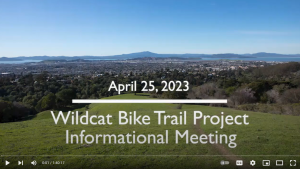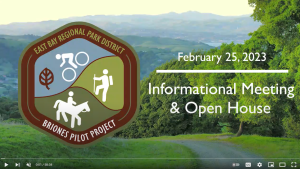The book Rose Hill: A Comprehensive History of a Pioneer Cemetery is available at the Black Diamond Visitor Center for $65. Proceeds from the sale of the book are used for the repair of gravestones in Rose Hill Cemetery.
The East Bay Regional Park District documents the history of the Rose Hill Cemetery, now a part of Black Diamond Mines Regional Preserve in Antioch. The book by Supervising Naturalist Traci Parent is based on her 30 years of research into the history of the people buried there.
From the 1860s to the turn of the 20th century, Black Diamond was the site of California's largest coal-producing region. Known as the Mount Diablo Coal Field, the area once boasted the five thriving communities of Nortonville, Somersville, Stewartville, West Hartley, and Judsonville.
Rose Hill Cemetery was created in the early 1860s and served as a Protestant burial ground for the coal field families. Although over 200 burials have been documented through research, it is likely that more interments exist. Once the site of neglect and vandalism, the cemetery and many of its gravestones have been painstakingly restored over recent decades by Park District rangers.
Researched over three decades through newspaper accounts, obituaries, and family histories, Rose Hill: A Comprehensive History of a Pioneer Cemetery is the only comprehensive account of the people interred in the cemetery.
Through the records brought together in the 1000-plus-page book, details come to light not just of the residents' deaths, but also of their lives in the then-remote yet bustling communities of the Mount Diablo Coal Field. Accounts of town concerts, weddings and celebrations paint a picture of the lighter side of life in the towns, in a time when horse-and-buggy was the common mode of transportation, and modern sewage and plumbing were not yet available in this rural community.
Daily life in the mining towns was filled with challenges and hard work. In fact, the majority of the individuals interred in the cemetery are children who died from disease when epidemics swept through the coal field. Some of the more prevalent diseases to claim young lives were diphtheria, scarlet fever, and smallpox. Advertisements and newspaper articles of the day reference cures - many of dubious efficacy. Other articles offer practical advice for limiting contagion. Mine explosions, other industrial mishaps, and horse-riding accidents were the cause of many of the adults' deaths.
With over 600 images, including diagrams, photographs, and contemporary newspaper accounts, the book gives the reader a fascinating look into local history and life as it once was in the coal towns of East Contra Costa County.
For more information about obtaining the book or visiting Black Diamond Mines Regional Preserve call the Park District at 1 (888) 327-2757.
Contact: Black Diamond Mines Staff
bdvisit@ebparks.org



